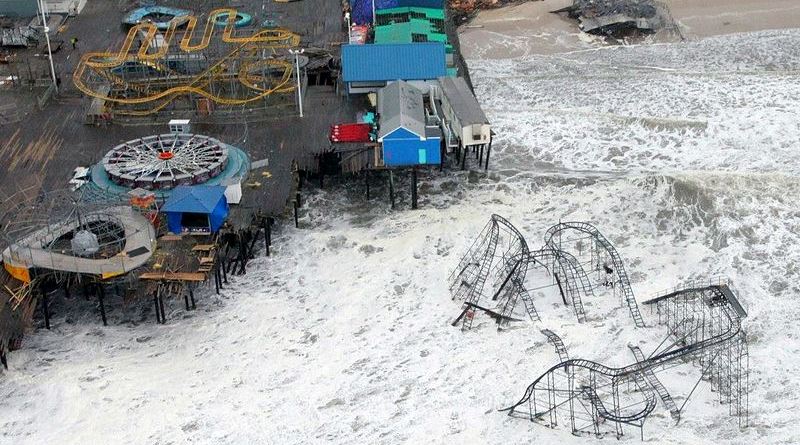New Jersey has been developing, densely and extensively, along its 1,800 miles of tidal coastline and fragile barrier islands for more than three centuries. Our coastal areas have now become the state’s most prominent tourist destination and the lifeblood of the economy of more than 20 percent of its municipalities.
However, as hurricanes Sandy, Joaquin and Jonas have shown us, the patterns of development that characterize the New Jersey coast have left many people and structures dangerously vulnerable to subsiding and eroding coastlines, increasingly frequent and severe storms, and growing flood risks associated with sea-level rise.
This vulnerability is only projected to get worse. Scientific analysis reveals that flooding and storm damage will occur at an increasing pace into the foreseeable future, bringing with them the potential to cause considerable property damage, loss of property value and declining municipal tax revenues. There is also growing concern that in some places along the coast, rising sea levels will result in increasingly frequent and intense flooding.
Forward-thinking municipalities can get started on this process now. A new report produced as part of the New Jersey Department of Environmental Protection Office of Coastal Land Use Planning’s Sustainable and Resilient Coastal Communities project offers a menu of options to help coastal communities increase their preparedness for the coming risks, and encourages them to select the ones that will have the biggest impact.
These local strategies fall into six major categories: enacting more resilient building codes and standards; refocusing development away from high-risk areas; protecting and restoring marshes and wetlands; limiting development and minimizing public investment in flood-prone areas; disclosing hazards; and realigning capital investment priorities.
In addition to making people and property safer, these strategies will help provide communities with a more secure economic future, less prone to the repetitive damage and loss that accompanies severe storms and flooding.
The report also highlights the opportunity the state has to provide critical guidance and assistance to communities, helping them evaluate future risk so they can take coordinated, focused action. Actions the report recommends the state take include:
- Adopting uniform, forward-looking projections of sea-level rise as the state’s standard to inform decisions about projects and programs that receive state funding and to guide state, county and community-level risk analysis and hazard mitigation planning;
- Creating a long-term, coast-wide adaption plan to serve as a framework for county and municipal mitigation and adaptation planning;
- Revising the state’s Municipal Land Use Law to require resilience as part of community master plans;
- Aligning state programs and incentives so they encourage municipal resilience efforts;
- Developing sustainable and self-renewing funding sources to promote adaptation and finance land-use changes, and to help communities implement these measures over time.
State guidance will allow local officials time to weigh options and choose those most suited to their community’s needs, and reliance on uniform, science-based state standards as the criteria by which to determine where coastal development should occur will help to break the unsustainable cycle of “build-flood-rebuild” that to date has characterized recovery along New Jersey’s shore. The analyses on which the project relied underscore the importance of initiating coordinated, focused planning without delay.
Immediate action will allow time for evaluation of alternatives while that is still feasible. This will be a critical focus for the next governor as he works to determine the most economically and environmentally responsible role the state can play in protecting and preserving our coastal communities.
Photo of Hurricane Sandy damage to the Casino Pier in Seaside Heights New Jersey courtesy of the New Jersey Army National Guard.
This article first appeared in the December 17, 2017 issue of the Asbury Park Press.
Reprinted with the permission of its author, David Kutner, who is the Planning Manager at New Jersey Future.


